

Mexico City

Cathedral
on the Zocalo
(officially the Plaza of the Constitution)

ruins of
the Grand Temple of the Aztec empire
(to the right on the Zocalo)
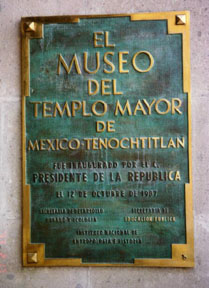
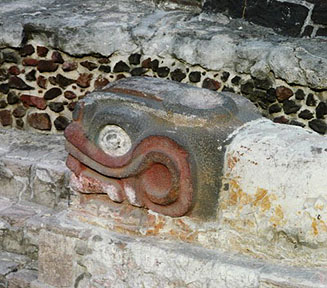
Templo
Mayor de Mexico-Tenochtitlan
(a major new museum)
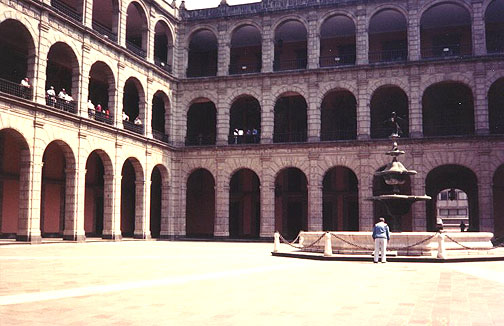
inside the
National Palace
(also on the Zocalo, further to the right)
![]()
on the second level are the
Diego Rivera
murals

the Aztecs use of corn
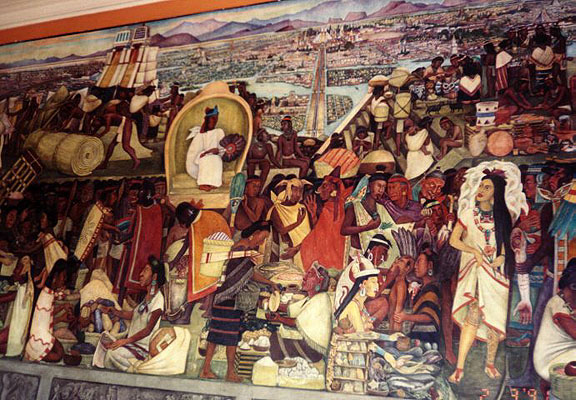
Aztec capital
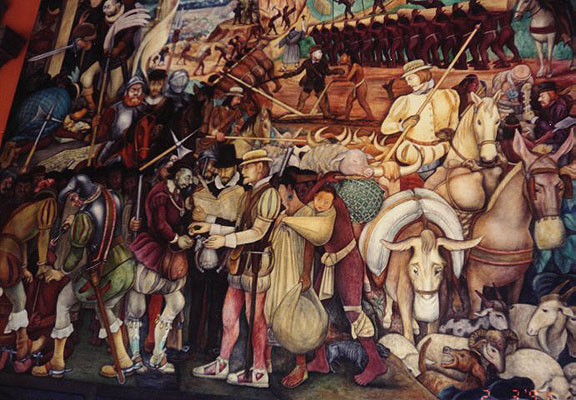
the conquest

the nation
![]()
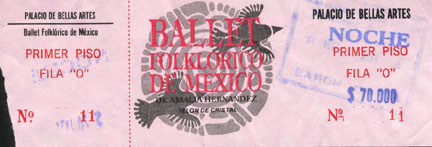
Folkloric show at the Palacio de Bellas Artes
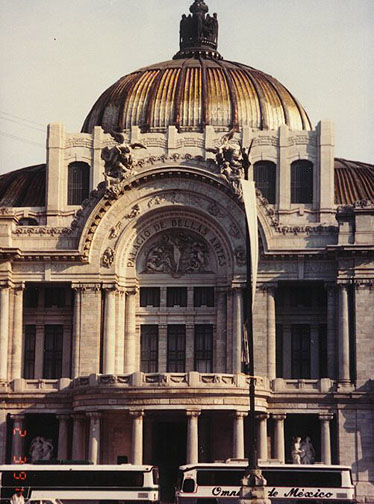
![]()
Chapultepec Castle

Chapultepec (Chapoltepēc "at the
grasshopper hill" in the Nahuatl language; c.f. Mexican Spanish chapulin
(grasshopper)) is a large hill on the outskirts of central Mexico City. It has
been a special place for Mexicans throughout Mexican history, and it was on this
hill that the Aztecs made a temporary home after arriving from northern Mexico
in the 1200s.
Chapultepec Park, which consists of the hill and 1,600 acres of surrounding
land, has many attractions, including Chapultepec Castle, where Maximilian I of
Mexico and Empress Carlota of Mexico once lived. The castle's sumptuous interior
now houses the National History Museum.
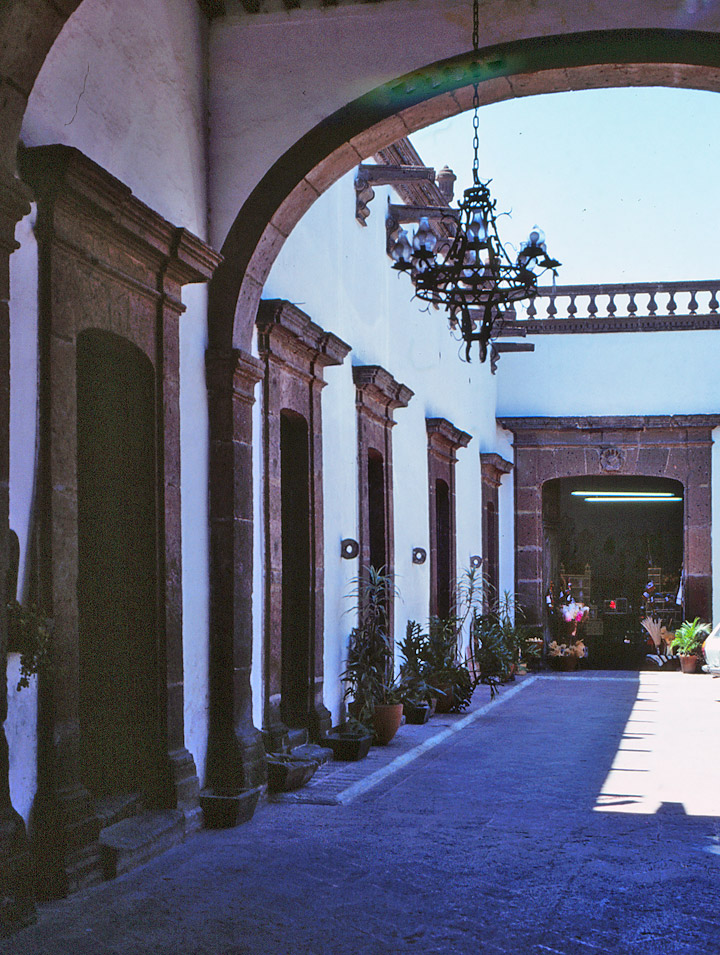
Castle courtyard
![]()
Basilica of Our Lady of Guadalupe
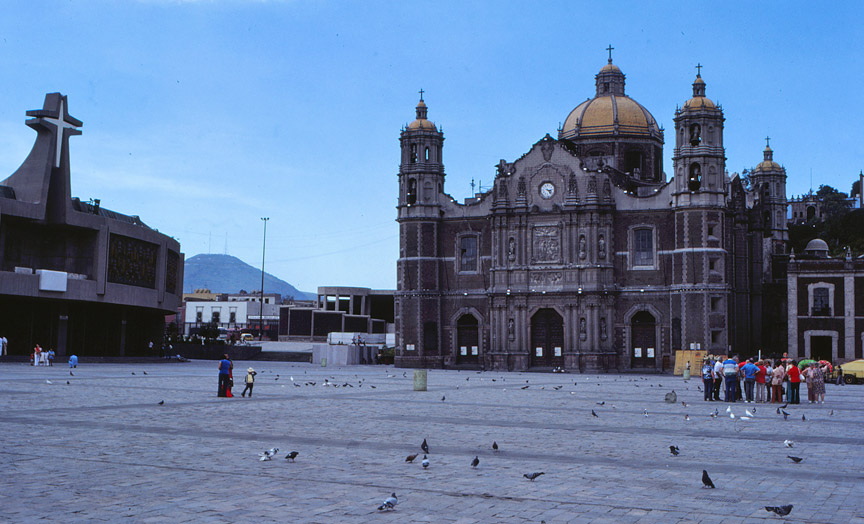
The name Basilica of Guadalupe
(also Basilica of Our Lady of Guadalupe, Basílica de Nuestra Señora de Guadalupe
in Spanish) may refer to one of the two churches built on top of Tepeyac hill,
north of Mexico City. The site is nearby the place where it is said Our Lady of
Guadalupe appeared in front of Juan Diego Cuauhtlatoatzin. This site is also
known as La Villa de Guadalupe.
The new Basilica is arguably the most important religious building in Mexico. It
houses the original tilma (or apron) of Juan Diego that shows the icon of Our
Lady of Guadalupe. Thus it is an important pilgrimage site and is visited by
several million people every year, especially around December 12, Our Lady of
Guadalupe's Feast day.
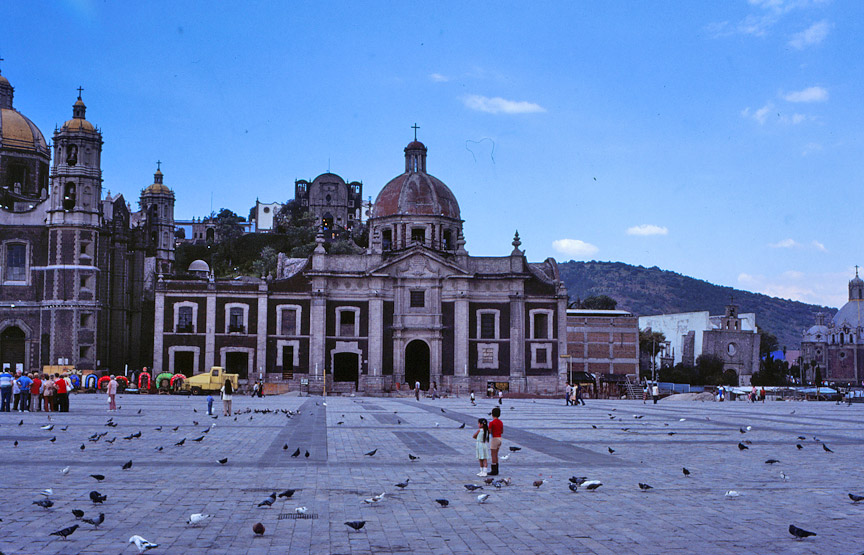
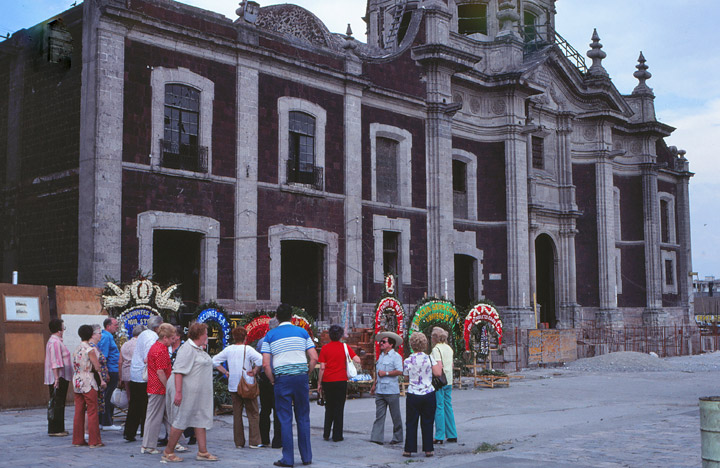
the second cathedral
Officially known as the "Templo Expiatorio a
Cristo Rey", the construction of the old basilica began in 1531 and was not
finished until 1709. It is characterized by its doric interior and marble
statues of Juan Diego and Fray Juan de Zumárraga. The church was granted
basilica status by Pope Pius X in 1904.
The apron of Juan Diego was housed in this church from 1709 to 1974. In 1921 a
bomb planted in a flower vase near the altar by a anticlerical activist exploded
causing great damage to the interior of the building. The apron survived the
incident largely undamaged.
The old basilica was sinking as a result of the weakness of the ground, as the
city was built on a former lake. As a consequence a new, more spacious, basilica
was built. The old one was closed for many years and repairs have recently
finished. It is now again open to the public and perpetual adoration is held
there.

new cathedral on the left
The modern basilica was built
between 1974 and 1976 by the Mexican architect Pedro Ramírez Vásquez who was
also the architect of the Estadio Azteca (Spanish for "Aztec Stadium"). It is a
circular building constructed in such a way as to allow maximum visibility for
the image to those inside. The structure is supported by 350 pilots that prevent
the basilica from sinking with the rest of the ground.
The Basilica is considered as the second most important sanctuary of Catholicism
(this based upon the number of pilgrims it hosts per year) just after the
Vatican City.
The Basilica has sitting space for 10,000 people inside the premises. However,
temporary seats are often placed in the atrium that allow up to 40,000 people to
take part of the Mass and other ritual celebrations. There are nine chapels in
the ground level each able to seat about 200 people.
Text from Wikipedia
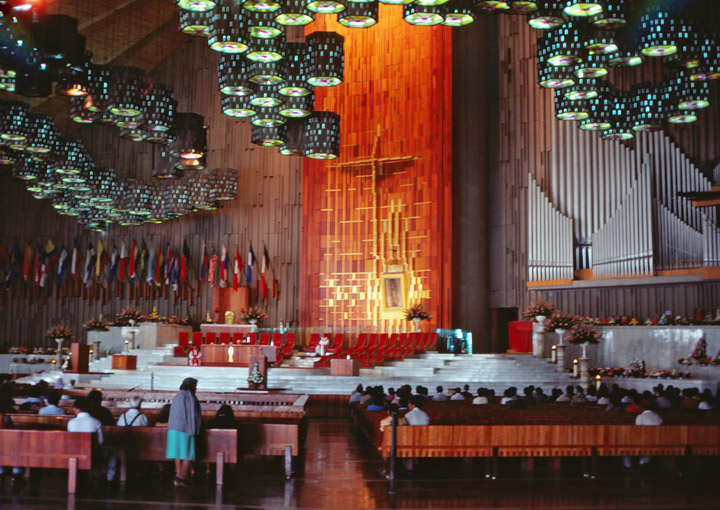
interior of the new cathedral
![]()
Zona Rosa

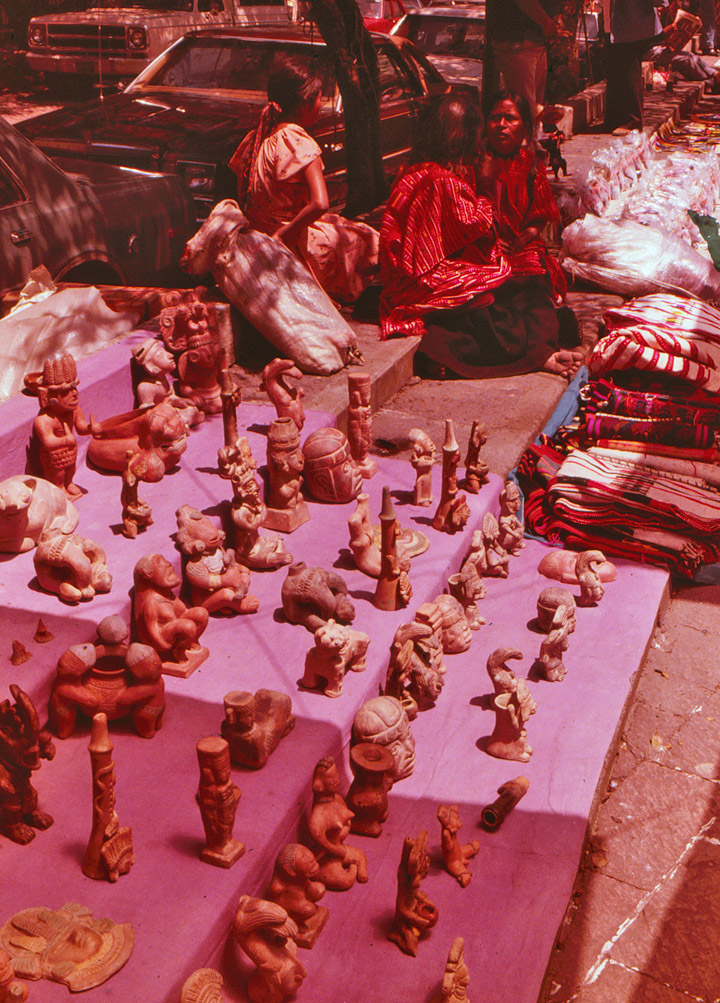

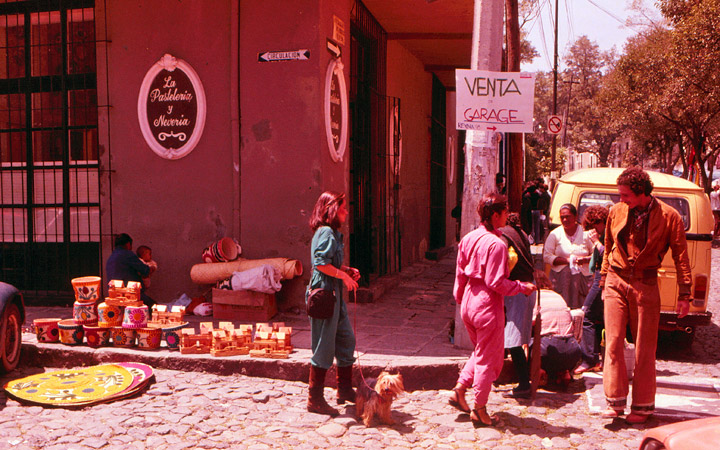
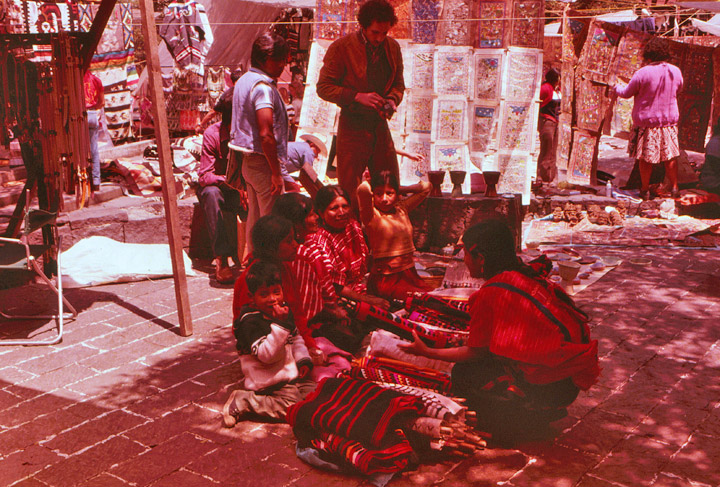
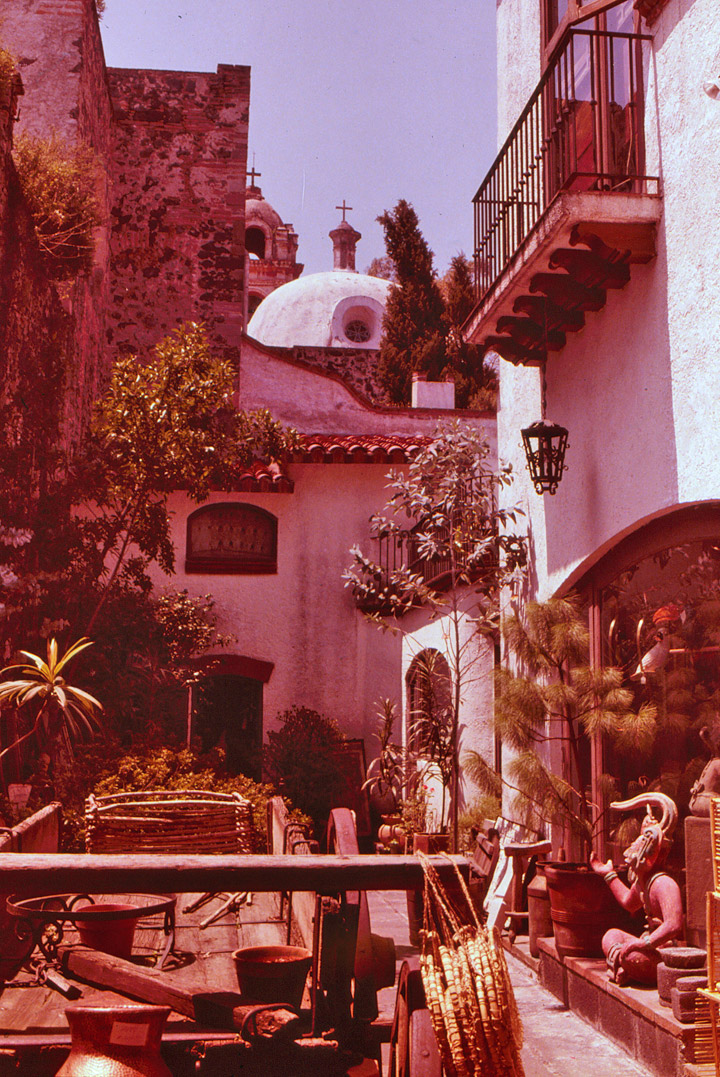
![]()
![]()